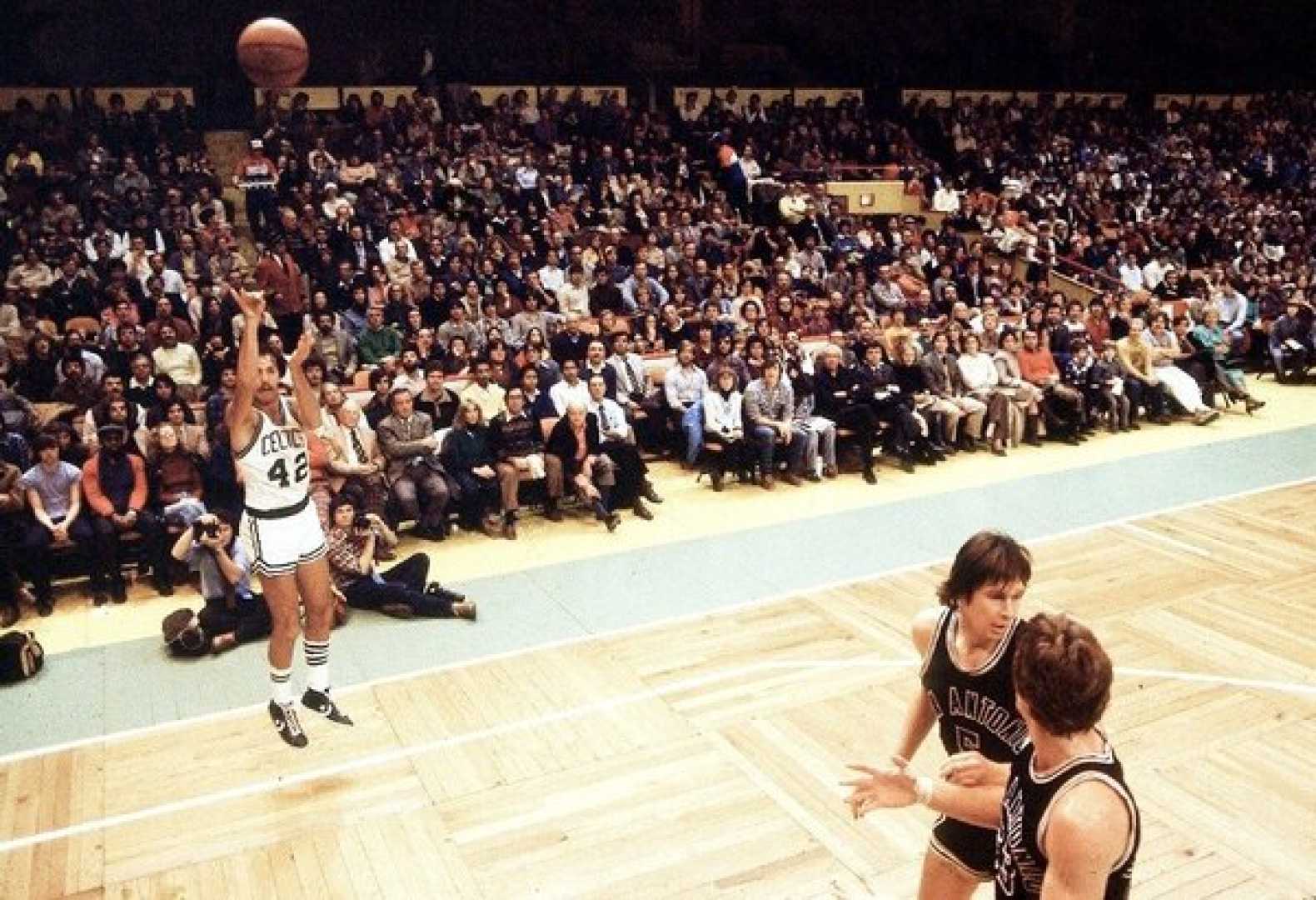Sports
Is the 3-Point Shot Losing Its Magic in NBA Basketball?

Boston, Massachusetts — The 2024 NBA season has ignited discussions around the impact of the 3-point shot, a staple of modern basketball, on the overall game. As the league embraces a surge in 3-point attempts, critics argue whether the shot’s novelty has worn off, overshadowing the game’s diversity.
In the summer of 1979, NBA Commissioner Larry O’Brien famously remarked, “I think that I shall never see a thing more lovely than a three,” after the league’s board of governors approved a new 3-point line. This decision fundamentally changed basketball, introducing a rewarding long-range shot that fans quickly embraced. Now, over 45 years later, that same excitement is being questioned.
The Boston Celtics, while competing against the Oklahoma City Thunder, exemplified this rising trend. In one of the most anticipated matchups of the season, the Celtics and Thunder combined to miss 67 3-pointers, with both teams attempting 100 shots from beyond the arc out of 176 total attempts. Such statistics raise an essential question: Are 3-pointers still the lovely spectacle they once were?
Despite the shooter’s paradise that today’s basketball courts have become, with an average of 75 3-pointers attempted each game—a record high—over 64 percent of these shots still miss. For the first time in NBA history, teams are seeing more missed 3s than missed 2s. This shift indicates a growing trend of reliance on the long-range shot, often resulting in an excess of failed attempts and diminishing excitement.
Joe Mazzulla, the Celtics’ head coach, champions the strategy of relying heavily on the 3-point shot, stating, “I love 3-pointers. I like math.” Boston’s offensive strategy mirrors the analytics movement in sports, with teams increasingly favoring 3-point shot attempts over midrange or post-up scoring. Currently, the Celtics are on pace to shatter records, averaging 48.5 3-point attempts per game.
With league-wide data revealing that 3-point rebounds now outnumber 2-point rebounds, the game has evolved dramatically in favor of long-range shooting. Nevertheless, this evolution has upset the balance of strategy across the league. The modern offense pivots around catch-and-shoot scenarios, creating situations where the ball frequently bypasses opportunities to penetrate the defense, which can lead to a less dynamic style of play.
However, the question remains regarding the broader implications of this 3-point reliance. Crowding the corners of the court with shooters executing traditional catch-and-shoot plays reduces the diversity in player skills required on the court. Mazzulla’s approach has been successful, yet critics contend it could restrict the overall creativity and excitement of the gameplay.
Boston’s emphasis on long-range shooting is illustrated in their shooting statistics, with their 3-pointers yielding 1.11 points on average—making them more efficient than most other shot types. Nonetheless, a series of missed 3s often disrupts the flow and excitement for fans, compared to the once breath-holding anticipation surrounding each shot taken from beyond the arc.
The NBA’s 3-point arc remains unchanged since 1979, a testament to the league’s hesitance to adapt alongside the evolving game. While major basketball leagues worldwide have adjusted their 3-point lines to enhance strategy and competitiveness, the NBA stands firm with its original placement. This reluctance to innovate suggests a potential stagnation in how the game is played today.
As the league navigates this critical juncture, could moving the 3-point line back inspire more diverse offensive strategies? Considerations for adjusting the arc could lead to fewer long-range shots and potentially more varied plays, encouraging a rebirth of traditional scoring methods in the process.
In conclusion, while the 3-point shot has undeniably transformed the game for the better, it could be time for a new phase in NBA basketball. Redefining how long-range shooting integrates into overall strategy may enhance the game and restore the thrill that the 3-point shot once brought to the court.












